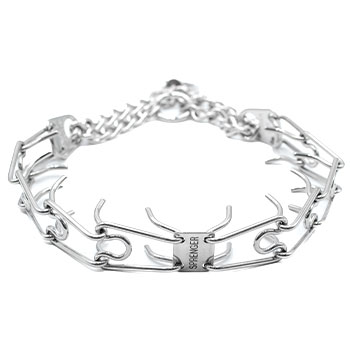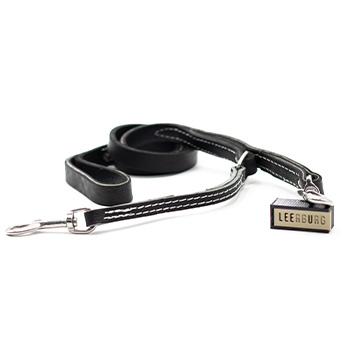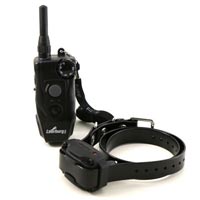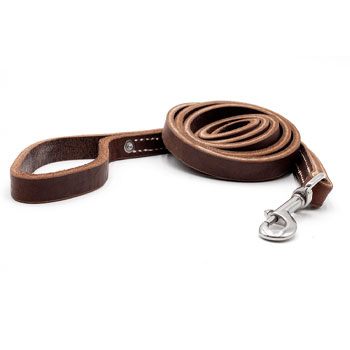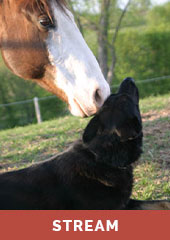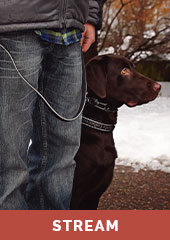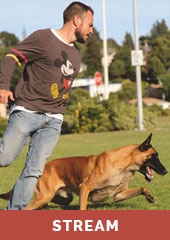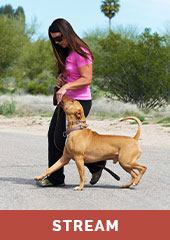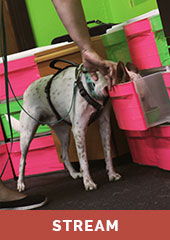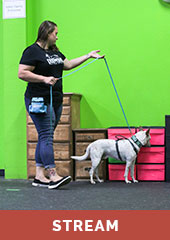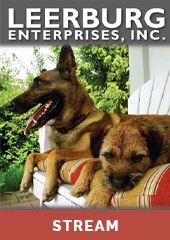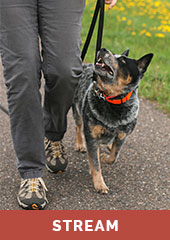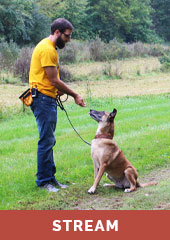
Leash Reactivity with Tyler Muto
If you dread going for walks with your dog because he or she lunges, barks, and pulls every time they see another dog or person, then this DVD was made for you.
Tyler Muto is a dog trainer from Buffalo, NY who specializes in helping families overcome challenging behaviors with their dogs. Tyler and Leerburg are very excited to bring you this DVD on leash reactivity, as it is one of the most common behavior problems that Tyler receives calls about.
This DVD will be tackling the specific issue of leash reactivity, which should be distinguished from dog-aggression in general. However, many of the principles and theories that we will be covering relate to aggression in general and thus the information contained within this course will be valuable to anyone who works regularly with dogs.
Throughout the DVD, we will be taking a very systematic approach to managing reactive behavior. When designing this course it was very important to me that we didn't just give quick fixes, but rather that each dog/handler team develop the skills, techniques, and understanding necessary to achieve lasting results. The course begins with a variety of foundation exercises which will help both the dog's and humans get comfortable with the various mechanics and skills that will be required of them later in the course. Then we will move into a theory portion of the course, which will help each student to better understand the motivation underlying their dogs' behavior, and how to work with those motivations rather than against them. Lastly, in the last half of the course we will be successively adding additional tools and skills to our practice until each team finds the approach that will work best for them.
OUTLINE:
- Chapter 1: Welcome
- Introduction and Navigating the Course
- The Pace of the Course
- Understanding Leash Reactivity and it's Causes
- Terminology and Concepts
- Tools We Will Use
- Safety Considerations
- Preparing for Next Week
- Contact Info and Tutorial Videos
- Chapter 2: Preliminary Work and Management
- The Importance of Foundation Work
- Quick Note Before We Begin
- Reward Based Recall
- Attention Exercises
- Place Command Foundation
- Introduction of Prong Collar and Leash Work
- Management
- Chapter 3: Strengthening Relevant Obedience
- Heel
- Doorways and Thresholds
- Place - Adding Pressure
- Recall - Adding Pressure
- Chapter 4: Body Language and Functional Rewards
- Cut-Off Cues
- Emotional Thresholds
- Functional Rewards
- Manufacturing Cut-Off Cues
- Early Set-Ups
- Chapter 5: Using the Prong Collar During Set-Ups
- When and Why We Use the Prong Collar
- Integrating the Prong Collar
- Chapter 6: The Remote Collar
- Background Info and Resources
- Remote Collar Basics
- The Recall
- The Place Command
- Gambling
- Chapter 7: Applying the Remote Collar to the Work
- A Bit of Theory
- Key Elements of the Fire Drill
- Putting it Together
- Chapter 8: Handler Confidence Drills
- What Are Handler Confidence Drills
- The Humans
- The Process
- Demonstrations
- Chapter 9: The Role of Punishment
- Overview
- Pet Convincer
- The Bonk
- Chapter 10: Moving Forward
- Before and After
- Closing Remarks
Comments
I find the little details that you give very informative and useful; can you tell me how you achieved the eye contact with golden lab/retriever(?) when you trained the heel around 1:55pm in the video?
I have now had my dog for about a year and a half. I have spent hours and hours at the Leerburg site, educating myself so I could do her justice and not screw her up. She is nearly perfect in so many ways, but I still am not over the hump with her in settings where she encounters other dogs. She has made a lot a progress but I haven't been able to see the light at the end of the tunnel until now.
This Tyler Muto course has helped me really understand what is behind her behavior, and has given me a path forward to continue working her toward the great dog I know she can be.
I got my current german Shepherd on Jan 6th from a rescue. It took me a while to figure out that reactivity is a mindset that needs to be changed and not an unwanted behavior than can be corrected.
After studying Tyler's techniques and principles I created a plan that I thought would work for my dog.
After eight weeks of hard work, 98% of the reactivity is gone. A lot of Tyler's reactivity stuff is available for free on the internet. For us, it was worth the price to get it all in one place.
It would be nice if one could jump to specific times with the online player. I found myself watching a section, going out and practicing the techniques, and then going back and reviewing the video.
The time slider at the bottom of the screen is pretty imprecise.
Must be a fair percentage of people watching this six hour video hoping you would get to what is a very common problem. Six hours and you only covered one side of the reactivity problem.
My dog will walk down the street past all sorts in a competitive style heel, my dog will do down stays and sit stays when asked with distractions. She just won't walk down the street on a leash past other dogs without doing everything and I mean everything to get to the other dog. Perfect until a dog appears, then build up, then barking and pulling in the direction of the dog. Then I correct the dog with a prong collar. This plays out over and over. Doing turnabouts, dog responds well to heel training. Looks the part until this happens which is actually worse because there is no warning for the people around you.
How do you know your dog is friendly I hear you ask?
I live in Northern Ireland, people don't take leash laws very seriously here. My dog might be the only dog I meet on leash on some walks. She meets the dog with open pawed excitement if it is brave enough to come on over. This happens often on public, sometimes main roads.
Failing a lottery win I am stuck with trying to fix it from my my end.
Oh, on exercise, five mile runs a few times a week at a moderate pace. On rest days at least two hour walks. Janice Gunn style flirt pole sessions (when I do this I use a flexi-leash professional attached to a custom made four inch wide neoprene foam lined belt. The dog stays with me fine even when dogs are close). Long line fetch works well. So she is very well exercised. She just won't behave when walking near other dogs on leash.
The information included in the video is very standard and might be of use to some people in some situations. The reason for the one star is that the video did not pertain to leash reactive dogs at all. This is very important. Not one leash reactive dog appeared in the video on leash reactivity and honestly most of what was featured is available online for free.
I am sure Tyler is a great dog trainer, but honestly are you really trying to say you have zero access to really leash reactive dogs? Are you really saying your training system is so good you couldn't find even one working example of each kind of reactivity? Hats off, if that is the case, I would have thought certain genetic traits can't be trained out completely or in some cases at all.
If you have access to those dogs then show what you actually do to solve, lessen or manage the problem and if it isn't pretty or politically correct at least it would be honest.
Hopefully something to think about for future titles.

